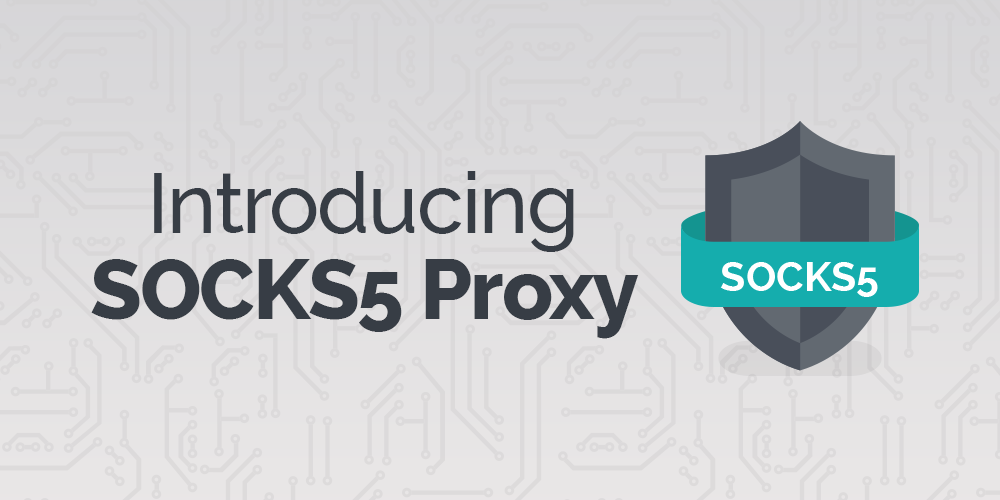
DSL Rentals now offers support for Socks-5 Proxy. You can use it with our both DSL and 4G services. Please read the following information about Socks-5 and HTTP proxy and their difference.
What is a Proxy server?
Proxy servers help us to gain access to geo-restricted content or blocked content. For instance, a student may not be allowed to use social media on the computers at his/her educational facility. But by using a proxy server, the student can easily access such content. The proxy server acts as an intermediate between the client (i.e., the student computer) and the actual server (i.e., the server from where the blocked content comes). A proxy server supplies a different IP address while performing the workaround process.
What is Socks-5 Proxy?
The network communication between computers is possible with the help of the conceptual model – Open Systems Interconnection (OSI). It is a representation of the communication process between different nodes of a network, with seven abstract layers. Each layer is responsible for a specific function and it serves the higher level. Socks-5 proxy uses the fifth layer of the OSI model, the Session layer. This layer is being served by the lower level transport layer which is the fourth layer. The HTTP proxy generally uses the transport layer to establish the communication. Each higher level is performing an extra function to establish the connection. For example, the lowermost Physical layer can just send bit streams whereas the second layer, Data Link layer, can send data packets between the nodes connected by the physical layer. The third layer, Network layer, can manage traffic between multiple nodes. We can even say that each higher level layer is capable of performing more functions than the lower ones.
Difference between Socks-5 and HTTP proxy
The kind of data transfer protocols used by the proxy server determines the type of the proxy server. For example, the HTTP proxies use a simple GET & POST transfers without following any authentication schemes. So, requests from an HTTP server are simply forwarded without any checks. This may sometimes allow requests from hackers to get passed without being noticed. Whereas a Socks-5 proxy uses authentication and then it establishes the connection between a client and a server. Only authorized computers can take part in the network and can transmit data. Socks-5 plays a major role in eliminating the online hacking or any other fraudulent activities. It’s better to use SOCKS-5 protocol if your transmission carries sensitive data such as password, bank details, confidential information, etc.; however, if you want to have a faster online browsing experience, it’s better to go with HTTP proxy.
Web browsers and the Socks-5 support
The advancement in the technology and the compatible features of web browsers are the major reasons for the Socks-5 being supported by different web browsers such as Internet Explorer, Mozilla Firefox, Google Chrome, Opera, etc. The usage of socks-5 proxies in those browsers require the respective IP address and the port number to be specified in their Sock proxy settings. Read here to configure the proxy settings for different browsers. Once the configuration is done, we are allowed to access the restricted contents using the specified Socks-5 proxy.
Why do we need Plug-ins for few browsers?
A Plug-in is also be called as an add-on or an extension, is a piece of software that extends the usability of the already existing software. For example, an application might not support graphical representation and by using the appropriate plug-in we can extend the service to support graphics. The older versions of browsers lack some functionality and we can extend it with a help of plug-ins. We often come across with an issue that even after configuring their browser for Socks-5 proxies, they still could not access it. The commonly used web browsers such as the Mozilla Firefox and the Google Chrome are on the top of the list. The main reason behind it is the authentication scheme used by the Socks-5 proxy. Here at DSLrentals we set username and password for clients to access proxies. So you would need to install plug-in to your browser to extend the authentication functionality. One of the plug-ins that could be used for Firefox & Chrome is the Foxyproxy. You may actually use it for both: HTTP & SOCKS-5 proxy servers. You may save your login / pass information in this add-on as well as the list of your proxies (very convenient!).
The difference, in a nutshell, is tabled below.
|
Socks-5 Proxy |
HTTP Proxy |
| Authorized TCP connection | Unauthorized TCP connection |
| More secured accesses | Less secured accesses |
| Can use any network port | Must use port 80 |
| Uses the fifth layer of the OSI | Uses the fourth layer of the OSI |
| Follows authenticated data transfers | Simple GET & POST data transfers |
| Eliminates fraudulent activities | Prone to fraudulent activities |
| Recommended for sensitive transmissions | Recommended for faster & less sensitive transmissions |
Contact us for Socks-5 Proxy Service!